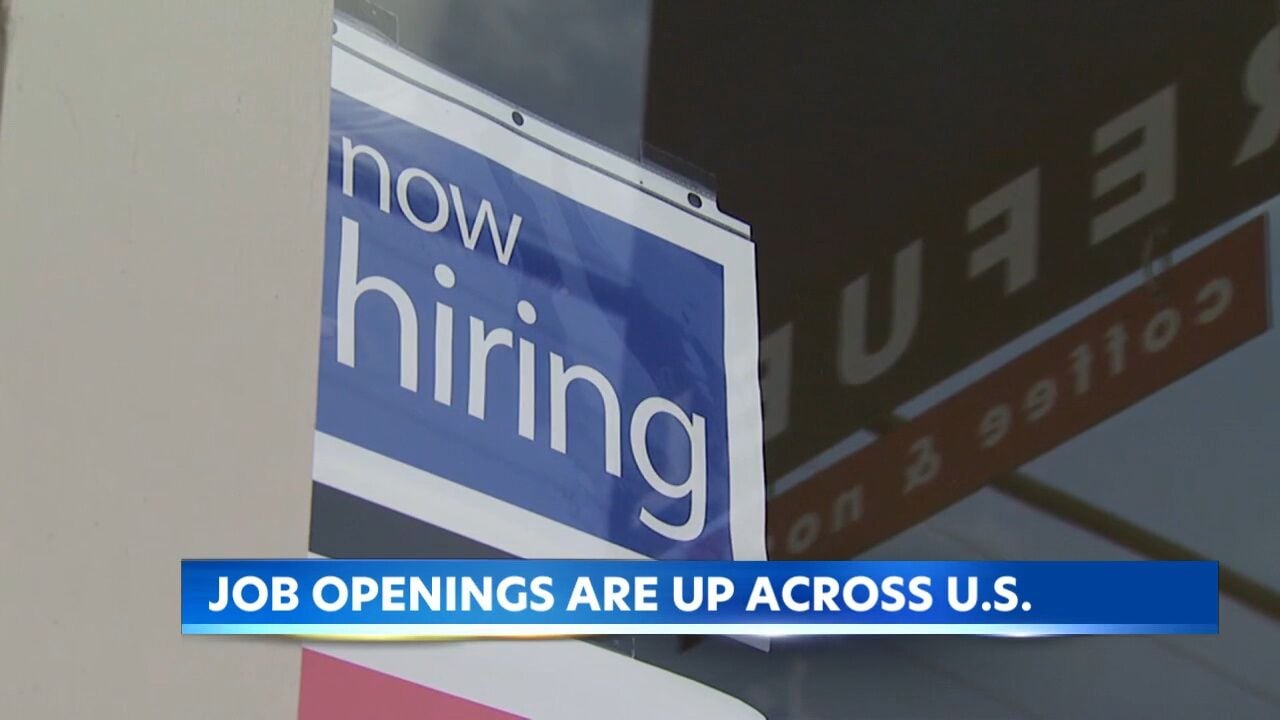Report on Gender and Racial Pay Disparity and its Implications for Sustainable Development Goals
Executive Summary
An analysis of the wage gap affecting Black women in the United States reveals significant and persistent economic disparities that directly impede progress toward several key Sustainable Development Goals (SDGs). Black Women’s Equal Pay Day, observed on July 10, highlights that a Black woman must work approximately 19 months to earn what a white man earns in 12. This disparity translates to Black women earning 64 cents for every dollar paid to white men, a gap that has narrowed by only 5 cents over the past two decades. At the current rate of change, pay equity is not projected to be achieved until 2227, posing a critical challenge to national and global development objectives.
Systemic Barriers to Economic Equality and SDG 8
The persistent wage gap is a direct contravention of SDG 8 (Decent Work and Economic Growth), particularly Target 8.5, which calls for equal pay for work of equal value. The challenges faced by Black women are systemic and multifaceted.
Key Factors Undermining Decent Work and Economic Growth
- Occupational Segregation: Black women are disproportionately represented in essential but underpaid sectors, including domestic work, child care, and social work. This segregation prevents fair valuation of their labor and hinders economic growth.
- Workplace Discrimination: Evidence, supported by personal testimonials from figures like Dr. Robyn Watson Ellerbe, indicates that even with advanced degrees and executive-level positions, Black women face significant pay discrimination. Dr. Watson Ellerbe discovered she was earning $30,000 less than a white male counterpart, illustrating a systemic failure to ensure equal opportunity as mandated by SDG 10.
- Ineffective Bargaining Power: Research confirms that gender and racial discrimination persist at the bargaining table, indicating that the issue is not one of individual choice but of systemic bias.
Impact on SDG 5 (Gender Equality) and SDG 10 (Reduced Inequalities)
The economic disparity is a clear manifestation of intersecting racial and gender discrimination, undermining the core principles of SDG 5 (Gender Equality) and SDG 10 (Reduced Inequalities). The lived experiences of individuals like Representative Alma Adams, whose mother was a domestic worker struggling to provide for her family, underscore the deep-rooted nature of this inequality.
Manifestations of Inequality
- Failure to Achieve Gender Equality (SDG 5): The wage gap is a primary indicator of the failure to achieve economic equality for women, particularly women of color. It demonstrates that education and career advancement alone are insufficient to overcome systemic barriers.
- Perpetuation of Inequality (SDG 10): The issue transcends individual circumstances and points to a systemic failure to uphold Target 10.2, which aims to promote the social and economic inclusion of all, irrespective of race or sex. The wage gap ensures that inequalities of outcome are perpetuated across generations.
Socio-Economic Consequences and Broader Development Setbacks
The financial repercussions of the wage gap have a cascading effect, hindering progress on multiple SDGs, including SDG 1 (No Poverty) and SDG 3 (Good Health and Well-being).
Long-Term Economic and Social Impacts
- Lifetime Earnings Loss: Over a 40-year career, a Black woman stands to lose over $1 million in earnings compared to a white male counterpart.
- Hindrance to Poverty Reduction (SDG 1): This lost income severely restricts a family’s ability to afford basic necessities such as housing, food, and healthcare, thereby perpetuating cycles of poverty.
- Impact on Health and Well-being (SDG 3): Financial instability and the inability to cover medical expenses, as noted in the experience of Rep. Adams’ family, create significant stress and negatively impact health outcomes.
- Erosion of Generational Wealth: The cumulative loss of income prevents Black women from investing in education for their children, building savings, and creating generational wealth, further entrenching inequality.
Furthermore, proposed cuts to social safety nets like Medicaid and the Supplemental Nutrition Assistance Program (SNAP), alongside challenges to the Equal Employment Opportunity Commission and diversity initiatives, threaten to exacerbate these barriers and reverse progress on the SDGs.
Policy Recommendations and Call to Action
Achieving pay equity and advancing the SDGs requires a concerted and multi-level policy response. The 62 years since the passage of the Equal Pay Act have not been sufficient to close the gap for Black women, necessitating urgent and robust action.
A Framework for Action
- Advance Robust Legislation: Enact and enforce comprehensive policies at the local, state, and federal levels designed to combat wage discrimination, promote pay transparency, and ensure equal pay for work of equal value.
- Strengthen Institutional Support: Protect and enhance funding for agencies like the Equal Employment Opportunity Commission and the Department of Labor’s Women’s Bureau, which are critical for enforcing anti-discrimination laws.
- Promote Public Awareness and Engagement: Mobilize communities, employers, and elected officials to demand equal pay and equitable workplace policies. Increased awareness is fundamental to building the political will required for systemic change.
Collective action is imperative to transform Black Women’s Equal Pay Day from a symbol of injustice into a milestone of achieved equality, thereby fulfilling the promise of the Sustainable Development Goals.
1. Which SDGs are addressed or connected to the issues highlighted in the article?
-
SDG 5: Gender Equality
- The article’s central theme is the economic disparity faced by Black women, a clear issue of gender inequality compounded by racial discrimination. It highlights the need to end discrimination and ensure equal opportunities, which are core principles of SDG 5.
-
SDG 8: Decent Work and Economic Growth
- The article directly discusses issues of employment, wage discrimination, and the value of work. The call for “equal pay for equal work” and the statistic that “Black women working full-time, year-round make just 64 cents for every dollar a white man makes” connect directly to the goal of achieving decent work and equal pay for all.
-
SDG 10: Reduced Inequalities
- The article focuses on inequality based on both race and gender. It describes the wage gap as a “systemic issue” that affects Black women regardless of their education or career level, pointing to the need to reduce inequalities of outcome and opportunity as outlined in SDG 10.
-
SDG 1: No Poverty
- The article links the wage gap to economic hardship, explaining how Representative Adams’ mother “barely made enough for her family to get by” and “struggled to put food on the table, to make rent, to pay the medical bills.” This demonstrates how unequal pay can trap families in poverty and prevent them from meeting basic needs.
2. What specific targets under those SDGs can be identified based on the article’s content?
-
Target 8.5: By 2030, achieve full and productive employment and decent work for all women and men… and equal pay for work of equal value.
- This target is the most prominent in the article. The entire piece is framed around “Black Women’s Equal Pay Day” and the fight for “equal pay for equal work.” The article explicitly states that for Black women, “pay equity is still centuries away,” directly addressing the goal of this target.
-
Target 5.1: End all forms of discrimination against all women and girls everywhere.
- The article identifies “workplace discrimination” and “gender and racial discrimination” as key reasons for the pay gap. The experience of Dr. Watson Ellerbe, who was paid less than her male counterpart despite her qualifications, is a direct example of the discrimination this target aims to eliminate.
-
Target 10.3: Ensure equal opportunity and reduce inequalities of outcome, including by eliminating discriminatory laws, policies and practices…
- The article argues that the wage gap is a “systemic issue” and that Black women face a “lack of opportunity.” It calls for advancing “robust policies on the local, state, and federal levels that truly combat wage discrimination,” which aligns with this target’s goal of eliminating discriminatory practices to ensure equal opportunity and outcomes.
-
Target 5.5: Ensure women’s full and effective participation and equal opportunities for leadership in political, economic and public life.
- The article touches on this target by discussing “occupational segregation,” where Black women are “overrepresented in underpaid but essential jobs” and underrepresented in higher-paying fields. It also highlights that even when they achieve “executive leadership,” like Dr. Watson Ellerbe, they face discrimination, showing a lack of equal opportunity in economic life.
-
Target 1.2: By 2030, reduce at least by half the proportion of men, women and children of all ages living in poverty…
- The article connects low wages directly to poverty. The description of a family struggling “to put food on the table, to make rent, to pay the medical bills” because the mother was “never paid what she was worth” illustrates how the failure to achieve equal pay contributes to poverty, which this target seeks to reduce.
3. Are there any indicators mentioned or implied in the article that can be used to measure progress towards the identified targets?
-
Ratio of women’s earnings to men’s earnings
- The article provides a precise statistic that serves as a direct indicator: “Black women working full-time, year-round make just 64 cents for every dollar a white man makes.” This measures the inequality of outcome (Target 10.3) and the gap in pay for work of equal value (Target 8.5).
-
Rate of change in the wage gap over time
- Progress is measured by the statement that “the wage gap has only narrowed by 5 cents in the last two decades.” This indicator shows the slow pace of change towards achieving pay equity.
-
Lifetime earnings loss due to the wage gap
- The article quantifies the long-term economic impact with the indicator that “a Black woman who works full-time throughout the year stands to lose over $1 million in earnings” over a 40-year career. This highlights the cumulative effect of the inequality.
-
Proportion of women in specific occupations
- The article implies this indicator by mentioning “occupational segregation,” where Black women are “overrepresented in underpaid but essential jobs such as child care workers, domestic workers, nursing aides, and social workers.” Measuring the distribution of women across different job sectors and pay scales would track progress against this issue (Target 5.5).
-
Reported instances of wage discrimination
- The personal account of Dr. Watson Ellerbe discovering she was “earning $30,000 less than her white male counterpart” serves as a qualitative indicator of personal experiences with discrimination (Target 5.1). While anecdotal, it represents the type of data that can be collected to measure the prevalence of discrimination.
4. SDGs, Targets and Indicators Table
| SDGs | Targets | Indicators |
|---|---|---|
| SDG 5: Gender Equality |
|
|
| SDG 8: Decent Work and Economic Growth |
|
|
| SDG 10: Reduced Inequalities |
|
|
| SDG 1: No Poverty |
|
|
Source: newsweek.com







